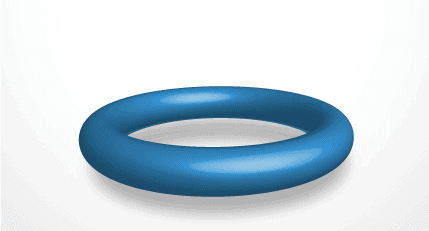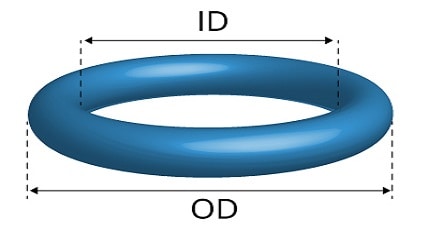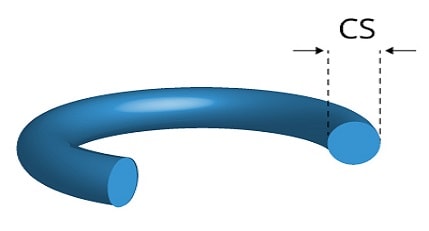| Acetaldehyde |
A |
| Acetamide |
A |
| Acetic Acid, Glacial |
A |
| Acetic Acid, 30% |
A |
| Acetic Anhydride |
B |
| Acetone |
A |
| Acetophenone |
A |
| Acetyl Chloride |
D |
| Acetylene |
A |
| Acrlylonitrile |
D |
| Adipic Acid |
A |
| Alkazene (Dibromoethylbenzene) |
D |
| Alum-NH3-Cr-K (Aqueous) |
A |
| Aluminum Acetate (Aqueous) |
A |
| Aluminum Chloride (Aqueous) |
A |
| Aluminum Fluoride (Aqueous) |
A |
| Aluminum Nitrate (Aqueous) |
A |
| Aluminum Phosphate (Aqueous) |
A |
| Aluminum Sulfate (Aqueous) |
A |
| Ammonia Anhydrous |
A |
| Ammonia Gas (cold) |
A |
| Ammonia Gas (hot) |
B |
| Ammonium Carbonate (Aqueous) |
* |
| Ammonium Chloride (Aqueous) |
A |
| Ammonium Hydroxide (conc.) |
A |
| Ammonium Nitrate (Aqueous) |
A |
| Ammonium Nitrite (Aqueous) |
A |
| Ammonium Persulfate (Aqueous) |
A |
| Ammonium Phosphate (Aqueous) |
A |
| Ammonium Sulfate (Aqueous) |
A |
| Amyl Acetate (Banana Oil) |
C |
| Amyl Alcohol |
A |
| Amyl Borate |
D |
| Amyl Chloronapthalene |
D |
| Amyl Napthalene |
D |
| Aniline |
A |
| Aniline Dyes |
A |
| Aniline Hydrochloride |
B |
| Animal Fats |
B |
| Ansul Ether (Anesthetics) |
C |
| Aqua Regia |
C |
| Aroclor, 1248 |
C |
| Aroclor, 1254 |
C |
| Aroclor, 1260 |
A |
| Arsenic Acid |
A |
| Arsenic Trichloride (Aqueous) |
C |
| Askarel |
D |
| Asphalt |
D |
| Banana Oil (Amyl Acetate) |
C |
| Barium Chloride (Aqueous) |
A |
| Barium Hydroxide (Aqueous) |
A |
| Barium Sulfate (Aqueous) |
A |
| Barium Sulfide (Aqueous) |
A |
| Beer |
A |
| Beet Sugar Liqours |
A |
| Benzaldehyde |
A |
| Benzene |
D |
| Benzene Sulfonic Acid (Nitrobenzine) (Pet Ether) |
C |
| Benzine (Ligroin) |
D |
| Benzoic Acid |
C |
| Benzoyl Chloride |
D |
| Benzyl Alcohol |
A |
| Benzyl Benzoate |
B |
| Benzyl Chloride |
D |
| Biphenyl (Diphenyl) (Phenylbenzene) |
D |
| Blast Furnace Gas |
D |
| Bleach Solutions |
A |
| Borax |
A |
| Bordeaux Mixture |
A |
| Brine |
A |
| Bromine-Anydrous |
D |
| Bromine Trifluoride |
D |
| Bromine Water |
B |
| Bromobenzene |
D |
| Bunker Oil |
D |
| Butadiene |
C |
| Butter (Animal Fat) |
A |
| Butyl Acetate |
C |
| Butyl Acetate Ricinoleate |
A |
| Butyl Acrylate |
D |
| Butyl Alcohol |
B |
| Butyl Amine |
B |
| Butyl Benzoate |
B |
| Butyl Carbitol |
A |
| Butyl Cellosolve |
A |
| Butyl Oleate |
B |
| Butyl Stearate |
C |
| Butylene |
D |
| Butyraldehyde |
B |
| Calcium Acetate (Aqueous) |
A |
| Calcium Bisulfite (Aqueous) |
D |
| Calcium Chloride (Aqueous) |
A |
| Calcium Hydroxide (Aqueous) |
A |
| Calcium Hypochlorite (Aqueous) |
A |
| Calcium Nitrate (Aqueous) |
A |
| Calcium Sulfide (Aqueous) |
A |
| Cane Sugar Liqours |
A |
| Carbamate |
B |
| Carbitol |
B |
| Carbolic Acid (Phenol) |
B |
| Carbon Bisulfide |
D |
| Carbon Dioxide |
B |
| Carbonic Acid |
A |
| Carbon Monoxide |
A |
| Carbon Tetrachloride |
D |
| Castor Oil |
B |
| Cellosolve |
B |
| Cellosolve Acetate |
B |
| Cellulube (Fryquel) |
A |
| China Wood Oil (Tung Oil) |
C |
| Chlorine (Dry) |
D |
| Chlorine (Wet) |
C |
| Chlorine Dioxide |
C |
| Chlorine Trifluoride |
D |
| Chloroacetic Acid |
A |
| Chloroacetone |
A |
| Cholorobenzene |
D |
| Chlorobromomethane |
B |
| Chlorobutadiene |
D |
| Chlorododecane |
D |
| Chloroform |
D |
| O-Chloronapthalene |
D |
| 1-Chloro-1-Nitro Ethane |
D |
| Chlorosulfonic Acid |
D |
| Chlorotoluene |
D |
| Chlorox (Sodium Hypochlorite NAOCl) |
B |
| Chrome Plating Solutions |
B |
| Chromic Acid |
C |
| Citric Acid |
A |
| Coal Tar (Creosote) |
D |
| Cobalt Chloride (Aqueous) |
A |
| Cocoanut Oil |
C |
| Cod Liver Oil |
A |
| Coke Oven Gas |
D |
| Copper Acetate (Aqueous) |
A |
| Copper Chloride (Aqueous) |
A |
| Copper Cyanide (Aqueous) |
A |
| Copper Sulfate (Aqueous) |
A |
| Corn Oil |
C |
| Cottonseed Oil |
B |
| Creosote (Coal Tar) |
D |
| Cresol |
D |
| Cresylic Acid |
D |
| Cumene |
D |
| Cyclohexane |
D |
| Cyclohexanol |
C |
| Cyclohexanone |
B |
| P-Cymene |
D |
| Decalin |
D |
| Decane |
D |
| Denatured Alcohol |
A |
| Detergent Solutions |
A |
| Developing Fluids |
B |
| Diacetone |
A |
| Diacetone Alcohol |
A |
| Dibenzyl Ether |
B |
| Dibenzyl Sebecate |
B |
| Dibromoethylbenzene |
D |
| Dibutyl Amine |
C |
| Dibutyl Ether |
C |
| Dibutyl Phthalate |
B |
| Dibutyl Sebecate |
B |
| O-Dichlorobenzene |
D |
| Dichloro-Isopropyl Ether |
C |
| Dicyclohexylamine |
D |
| Diesel Oil |
D |
| Diethylamine |
B |
| Diethyl Benzene |
D |
| Diethyl Ether |
D |
| Diethylene Glycol |
A |
| Diethyl Sebecate |
B |
| Diisobutylene |
D |
| Diisopropyl Benzene |
D |
| Diisopropyl Ketone |
A |
| Diisopropylidene Acetone (Phorone) |
C |
| Dimethyl Aniline (Xylidine) |
B |
| Dimethyl Ether (Methyl Ether) |
D |
| Dimethyl Formamide |
B |
| Dimethyl Phthalate |
B |
| Dinitrotoluene |
D |
| Dioctyl Phtalate |
B |
| Dioctyl Sebecate |
B |
| Dioxane |
B |
| Dioxolane |
B |
| Dipentene |
D |
| Diphenyl (Biphenyl) (Phenylbenzene) |
D |
| Diphenyl Oxides |
D |
| Dowtherm Oil |
D |
| Dry Cleaning Fluids |
D |
| Epichlorohydrin |
B |
| Ethane |
D |
| Ethanolamine |
B |
| Ethyl Acetate |
B |
| Ethyl Acetoacetate |
B |
| Ethyl Acrylate |
B |
| Ethyl Alcohol |
A |
| Ethyl Benzene |
D |
| Ethyl Benzoate |
A |
| Ethyl Cellosolve |
D |
| Ethyl Cellulose |
B |
| Ethyl Chloride |
C |
| Ethyl Chlorocarbonate |
B |
| Ethyl Chloroformate |
B |
| Ethyl Ether |
C |
| Ethyl Formate |
B |
| Ethyl Mercaptan |
C |
| Ethyl Oxalate |
A |
| Ethyl Pentachlorobenzene |
D |
| Ethyl Silicate |
A |
| Ethylene |
B |
| Ethylene Chloride |
C |
| Ethylene Chlorohydrin |
B |
| Ethylene Diamine |
A |
| Ethylene Dichloride |
C |
| Ethylene Glycol |
A |
| Ethylene Oxide |
C |
| Ethylene Trichloride |
C |
| Fatty Acids |
C |
| Ferric Chloride (Aqueous) |
A |
| Ferric Nitrate (Aqueous) |
A |
| Ferric Sulfate (Aqueous) |
A |
| Fish Oil |
D |
| Fluorinated Cyclic Ethers |
A |
| Fluorine (Liquid) |
D |
| Fluorobenzene |
D |
| Fluoroboric Acid |
A |
| Fluorocarbon Oils |
A |
| Fluorolube |
A |
| Fluorosilicic Acid (Hydrofluosilicic Acid) |
B |
| Formaldehyde (RT) |
A |
| Formic Acid |
A |
| Freon 11 |
D |
| Freon 12 |
B |
| Freon 13 |
A |
| Freon 21 |
D |
| Freon 22 |
A |
| Freon 31 |
A |
| Freon 32 |
A |
| Freon 112 |
D |
| Freon 113 |
C |
| Freon 114 |
A |
| Freon 115 |
A |
| Freon 142b |
B |
| Freon 152b |
A |
| Freon 218 |
A |
| Freon C316 |
A |
| Freon C318 |
A |
| Freon 13B1 |
A |
| Freon 114B2 |
D |
| Freon 502 |
A |
| Freon TF |
D |
| Freon T-WD602 |
B |
| Freon TMC |
C |
| Freon T-P35 |
A |
| Freon TA |
B |
| Freon TC |
B |
| Freon MF |
D |
| Freon BF |
D |
| Fuel Oil |
D |
| Fumaric Acid |
D |
| Furan, Furfuran |
C |
| Furfural |
B |
| Fyquel (Cellulube) |
A |
| Gallic Acid |
B |
| Gasoline |
D |
| Gelatin |
A |
| Glauber’s Salt (Aqueous) |
B |
| Glucose |
A |
| Glue |
A |
| Glycerin |
A |
| Glycols |
A |
| Green Sulfate Liquor |
A |
| Halowax Oil |
D |
| N-Hexaldehyde |
A |
| Hexane |
D |
| N-Hexene-1 |
D |
| Hexyl Alcohol |
C |
| Hydrazine |
A |
| Hydraulic Oil (Petroleum) |
D |
| Hydrobromic Acid |
A |
| Hydrobromic Acid 40% |
A |
| Hydrochloric Acid (Cold) 37% |
A |
| Hydrochloric Acid (Hot) 37% |
C |
| Hydrocyanic Acid |
A |
| Hydrofluoric Acid (Conc.) Cold |
C |
| Hydrofluoric Acid (Conc.) Hot |
D |
| Hydrofluoric Acid- Anhydrous |
C |
| Hydrofluosilicic Acid (Fluosilicic Acid) |
B |
| Hydrogen Gas |
A |
| Hydrogen Peroxide (90%) |
B |
| Hydrogen Sulfide (Wet) Cold |
A |
| Hydrogen Sulfide (Wet) Hot |
A |
| Hydroquinone |
B |
| Hypochlorous Acid |
B |
| Iodine Pentafluoride |
D |
| Iodoform |
D |
| Isobutyl Alcohol |
A |
| Isooctane |
D |
| Isophorone |
C |
| Isopropyl Acetate |
B |
| Isopropyl Alcohol |
A |
| Isopropyl Chloride |
D |
| Isopropyl Ether |
D |
| Kerosene |
D |
| Lacquers |
D |
| Lacquer Solvents |
D |
| Lactic Acid (Cold) |
A |
| Lactic Acid (Hot) |
D |
| Lard |
B |
| Lavendar Oil |
D |
| Lead Acetate (Aqueous) |
A |
| Lead Nitrate (Aqueous) |
A |
| Lead Sulfamate (Aqueous) |
A |
| Ligroin (Benzine) (Nitrobenzine) |
D |
| Lime Bleach |
A |
| Lime Sulfur |
A |
| Lindol (Hydraulic Fluid) |
A |
| Linoleic Acid |
D |
| Linseed Oil |
C |
| Liquefied Petroleum Gas |
D |
| Lubricating Oils (Petroleum) |
D |
| Lye |
A |
| Magnesium Chloride (Aqueous) |
A |
| Magnesium Hydroxide (Aqueous) |
A |
| Magnesium Sulfate (Aqueous) |
A |
| Maleic Acid |
B |
| Malic Acid |
B |
| Mercury Chloride (Aqueous) |
A |
| Mercury |
A |
| Mesityl Oxide |
B |
| Methane |
D |
| Methyl Acetate |
A |
| Methyl Acrylate |
B |
| Methylacrylic Acid |
B |
| Methyl Alcohol |
A |
| Methyl Bromide |
D |
| Methyl Butyl Ketone (Propyl Acetone) |
A |
| Methyl Cellosolve |
B |
| Methyl Chloride |
C |
| Methyl Cyclopentane |
D |
| Methylene Chloride |
C |
| Methyl Ether (Dimethyl Ether) |
D |
| Methyl Ethyl Ketone |
A |
| Methyl Formate |
B |
| Methyl Isobutyl Ketone |
B |
| Methyl Methacrylate |
C |
| Methyl Oleate |
B |
| Methyl Salicylate |
B |
| Milk |
A |
| Mineral Oil |
C |
| Monochlorobenzene |
D |
| Monomethyl Aniline |
B |
| Monoethanol Amine |
A |
| Monomethyl Ether (Methyl Ether) |
D |
| Monovinyl Acetylene |
B |
| Mustard Gas |
A |
| Naphtha |
D |
| Naphthalene |
D |
| Naphthalenic Acid |
D |
| Natural Gas |
D |
| Neats Foot Oil |
B |
| Neville Acid |
B |
| Nickel Acetate (Aqueous) |
A |
| Nickel Chloride (Aqueous) |
A |
| Nickel Sulfate (Aqueous) |
A |
| Niter Cake |
A |
| Nitric Acid (Conc.) |
D |
| Nitric Acid (Dilute) |
B |
| Nitric Acid-Red Fuming |
D |
| Nitrobenzene |
A |
| Nitrobenzene (Petroleum Ether) |
D |
| Nitroethane |
B |
| Nitrogen |
A |
| Nitrogen Tetroxide |
C |
| Nitromethane |
B |
| Octachlorotoluene |
D |
| Octadecane |
D |
| N-Octane |
D |
| Octyl Alcohol |
C |
| Oleic Acid |
D |
| Oleum Spirits |
D |
| Olive Oil |
B |
| O-Dichlorobenzene |
D |
| Oxalic Acid |
A |
| Oxygen-Cold |
A |
| Oxygen-(200-400oF) |
C |
| Ozone |
A |
| Paint Thinner, Duco |
D |
| Palmitic Acid |
B |
| Peanut Oil |
C |
| Perchloric Acid |
B |
| Perchloroethylene |
D |
| Petroleum-Below 250oF |
D |
| Petroleum-Above 250oF |
D |
| Phenol (Carbolic Acid) |
B |
| Phenylbenzene (Biphenyl) (Diphenyl) |
D |
| Phenyl Ethyl Ether |
D |
| Phenyl Hydrazine |
B |
| Phorone (Diisopropylidene Acetone) |
C |
| Phosphoric Acid-20% |
A |
| Phosphoric Acid-45% |
A |
| Phosphorus Trichloride |
A |
| Pickling Solution |
C |
| Picric Acid |
B |
| Pinene |
D |
| Pine Oil |
D |
| Piperidine |
D |
| Plating Solution- Chrome |
A |
| Plating Solution- Others |
A |
| Polyvinyl Acetate Emulsion |
A |
| Potassium Acetate (Aqueous) |
A |
| Potassium Chloride (Aqueous) |
A |
| Potassium Cupro Cyanide |
A |
| Potassium Cyanide (Aqueous) |
A |
| Potassium Dichromate (Aqueous) |
A |
| Potassium Hydroxide (Aqueous) |
A |
| Potassium Nitrate (Aqueous) |
A |
| Potassium Sulfate (Aqueous) |
A |
| Producer Gas |
D |
| Propane |
D |
| i-Propyl Acetate |
B |
| n-Propyl Acetate |
B |
| Propyl Acetone (Methyl Butyl Ketone) |
A |
| Propyl Alcohol |
A |
| Propyl Nitrate |
B |
| Propylene |
D |
| Propylene Oxide |
B |
| Pydraul, 10E, 29 ELT |
A |
| Pydraul, 30E, 50E, 65E, 90E |
A |
| Pydraul, 115E |
A |
| Pydraul, 230E, 312C, 540C |
D |
| Pyranol, Transformer Oil |
D |
| Pyridine |
B |
| Pyroligneous Acid |
B |
| Pyrrole |
C |
| Radiation |
B |
| Rapeseed Oil |
A |
| Red Oil (MIL-H-5606) |
D |
| RJ-1 (MIL-F-25558 B) |
D |
| RP-1 (MIL-F-25576 C) |
D |
| Sal Ammoniac |
A |
| Salicylic Acid |
A |
| Salt Water |
A |
| Sewage |
B |
| Silicate Esters |
D |
| Silicone Greases |
A |
| Silicone Oils |
A |
| Silver Nitrate |
A |
| Skydrol 500 |
A |
| Skydrol 7000 |
A |
| Soap Solutions |
A |
| Soda Ash |
A |
| Sodium Acetate (Aqueous) |
A |
| Sodium Bicarbonate (Aqueous)(Baking Soda) |
A |
| Sodium Bisulfite (Aqueous) |
A |
| Sodium Borate (Aqueous) |
A |
| Sodium Chloride (Aqueous) |
A |
| Sodium Cyanide (Aqueous) |
A |
| Sodium Hydroxide (Aqueous) |
A |
| Sodium Hypochlorite (Aqueous) (Chlorox) |
B |
| Sodium Metaphosphate (Aqueous) |
A |
| Sodium Nitrate (Aqueous) |
A |
| Sodium Perborate (Aqueous) |
A |
| Sodium Peroxide (Aqueous) |
A |
| Sodium Phosphate (Aqueous) |
A |
| Sodium Silicate (Aqueous) |
A |
| Sodium Sulfate (Aqueous) |
A |
| Sodium Thiosulfate (Aqueous) |
A |
| Soybean Oil |
C |
| Stannic Chloride (Aqueous) |
A |
| Stannous Chloride (Aqueous) |
A |
| Steam Under 300oF |
A |
| Steam Over 300oF |
C |
| Stearic Acid |
B |
| Stoddard Solvent |
D |
| Styrene |
D |
| Sucrose Solution |
A |
| Sulfite Liquors |
B |
| Sulfur |
A |
| Sulfur Chloride (Aqueous) |
D |
| Sulfur Dioxide (Dry) |
A |
| Sulfur Dioxide (Wet) |
A |
| Sulfur Dioxide (Liquified Under Pressure) |
A |
| Sulfur Hexafluoride |
A |
| Sulfur Trioxide |
B |
| Sulfuric Acid (Dilute) |
B |
| Sulfuric Acid (conc.) |
C |
| Sulfuric Acid (20% Oleum) |
D |
| Sulfurous Acid |
B |
| Tannic Acid |
A |
| Tar, Bitruminous |
C |
| Tartaric Acid |
B |
| Terpineol |
C |
| Tertiary Butyl Alcohol |
B |
| Tertiary Butyl Catechol |
B |
| Tertiary Butyl Mercaptan |
D |
| Tetrabromoethane |
D |
| Tetrabromomethane |
D |
| Tetrabutyl Titanate |
A |
| Tetrachloroethylene |
D |
| Tetrahydrofuran |
C |
| Tetralin |
D |
| Thionyl Chloride |
C |
| Titanium Tetrachloride |
D |
| Toluene |
D |
| Toluene Diisocyanate |
B |
| Transformer Oil |
D |
| Transmission Fluid Type A |
D |
| Triacetin |
A |
| Triaryl Phosphate |
A |
| Tributoxy Ethyl Phosphate |
A |
| Tributyl Mercaptan |
D |
| Tributyl Phosphate |
B |
| Trichloroacetic Acid |
B |
| Trichloroethane |
D |
| Trichloroethylene |
D |
| Tricresyl Phosphate |
D |
| Trethanol Amine |
A |
| Triethyl Aluminum |
C |
| Triethyl Borane |
C |
| Trinitrotoluene |
D |
| Trioctyl Phosphate |
A |
| Tung Oil (China Wood Oil) |
C |
| Turbine Oil |
D |
| Turpentine |
D |
| Usymmetrical Dimethyl Hydrazine |
A |
| Varnish |
D |
| Vegetable Oils |
C |
| Versilube F-50 |
A |
| Vinegar |
A |
| Vinyl Chloride |
D |
| Wagner 21B Brake Fluid |
A |
| Water |
A |
| Whiskey, Wines |
A |
| White Pine Oil |
D |
| White Oil |
D |
| Wood Oil |
D |
| Xylene |
D |
| Xylidine (Di-methyl Aniline) |
B |
| Zeolites |
A |
| Zinc Acetate (Aqueous) |
A |
| Zinc Chloride (Aqueous) |
A |
| Zinc Sulfate (Aqueous) |
A |



